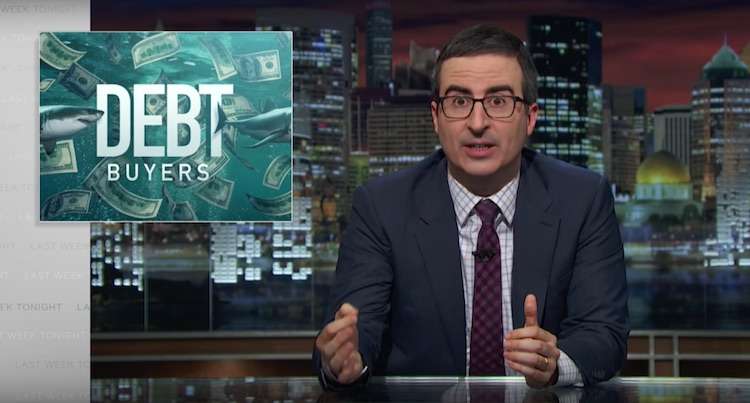Southwest Airlines Workers Looked After a Passenger's Pet Fish for 4 Months After it was Banned From Flight
Texting "Airport Fish Taker" Kira asked how Theo was doing on July 31st. "He's great" said Fish Taker Ismael.

A dynamic duo from Wall Street has just passed a huge milestone in charitable history, completely paying off the medical debt for some 3.6 million Americans—a do-good revolution from two guys who used to be debt collectors themselves.
It was the Occupy Wall Street movement that first stirred the hearts of Jerry Ashton and Craig Antico in 2011. A chance encounter down in Zuccotti Park inspired Ashton and Antico to join a small group who were determined to make a difference by paying off the medical and student loan debts for random strangers whom they'd never met. It was called the "Rolling Jubilee."
Capitalizing on the spotlight the Occupy protestors were attracting, the two men managed to raise enough in donations from their peers to help the Jubilee buy up and clear $40 million in overdue accounts.
Then, in 2015 WS reported that the former debt collectors had wanted to keep the effort going on their own, and set out to replicate the Occupy success with RIP Medical Debt—redirecting their accounting skills, once used for targeting the indebted, toward helping them with their delinquent payments.
They were hoping to raise $14 million to clear $1 billion of outstanding debt. At the time they had only amassed $74,000, so how could they reach their goal?
Some hospital patients can't or won't pay their huge bills for years at a time—so, a hospital's claim to $50,000, or even $100,000 suddenly begins to look quite worthless. They could take legal action, but there's no guarantee they would collect, and it's expensive to pay the legal fees resulting.
So, RIP Medical Debt comes into the picture and offers $5,000 in immediate payment to take that claim off their hands—essentially buying the debt for pennies on the dollar.
In 2016, talk show-host John Oliver (formerly of the Daily Show) donated $15 million to cover unpaid medical accounts for RIP Medical Debt on his live TV show, refocusing the public spotlight on the nonprofit, leading to ever more donations and public awareness.
They're now operating on a different planet—$6.7 billion, with a ‘b' of medical debt has been erased by these exceptional money hounds, easing the financial burdens of 3.6 million Americans, or around 1% of the entire country's population.
In 2020, as part of MacKenzie Scott's donating spree following her divorce from Jeff Bezos, Ms. Scott donated $50 million to RIP Medical Debt.
The subtle brilliance in the act of buying outstanding debt from hospitals is that it's up to the hospital's accounting department to assess whose debts are available for RIP Medical Debt to buy. This gives the charity a true randomness that prevents natural biases or preferences; the little yellow envelopes arrive into the hands of strangers, reporting the good news that they now debt-free, as if they'd won the lottery or divine intervention.
The only requirement is that the individuals or families earn equal to or less than four-times the federal poverty income level.
"Millions of people are sitting at the kitchen table trying to decide, ‘do I buy medication today or do I pay the water bill, or do I pay the debt collector?' We simply decided to take the debt collector out of the equation," said Aston and Antico.
SHARE Their Unbelievable Generosity On Social Media…
Be the first to comment